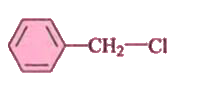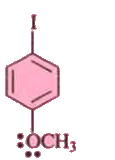An SN2 reaction occurs through the formation of a
carbocation
carbanion
free radical
transition state.
The correct Answer is:D
To solve the question regarding the mechanism of an SN2 reaction, we need to understand the characteristics of this type of reaction. Here’s a step-by-step breakdown:
Step 1: Understand the SN2 Mechanism
The SN2 (Substitution Nucleophilic Bimolecular) reaction is characterized by a single-step mechanism where the nucleophile attacks the substrate at the same time as the leaving group departs.
Hint: Recall that SN2 reactions involve a nucleophile and a substrate, and they occur in one concerted step.
Step 2: Identify the Transition State
In an SN2 reaction, there is no formation of a stable intermediate like a carbocation. Instead, there is a transition state where the nucleophile is partially bonded to the substrate while the leaving group is partially leaving.
Hint: Remember that the transition state is a high-energy state that cannot be isolated; it represents the point of maximum energy along the reaction pathway.
Step 3: Recognize the Role of Bonds
During the SN2 reaction, one bond is formed (between the nucleophile and the carbon) while another bond is broken (between the carbon and the leaving group). This simultaneous process is crucial to the mechanism.
Hint: Focus on the concept of bond formation and bond breaking occurring at the same time in the reaction.
Step 4: Conclusion
Since the question asks about the formation during an SN2 reaction, the correct answer is that an SN2 reaction occurs through the formation of a transition state.
Final Answer: The correct answer is "transition state."
The SN2 (Substitution Nucleophilic Bimolecular) reaction is characterized by a single-step mechanism where the nucleophile attacks the substrate at the same time as the leaving group departs.
In an SN2 reaction, there is no formation of a stable intermediate like a carbocation. Instead, there is a transition state where the nucleophile is partially bonded to the substrate while the leaving group is partially leaving.
During the SN2 reaction, one bond is formed (between the nucleophile and the carbon) while another bond is broken (between the carbon and the leaving group). This simultaneous process is crucial to the mechanism.
Since the question asks about the formation during an SN2 reaction, the correct answer is that an SN2 reaction occurs through the formation of a transition state.
Topper's Solved these Questions
- BOOK - ICSECHAPTER - ORGANIC CHEMISTRY : SOME BASIC PRINCIPLES AND TECHNIQUES EXERCISE - TRUE OR FALSE TYPE QUESTIONS50videos
ORGANIC CHEMISTRY : SOME BASIC PRINCIPLES AND TECHNIQUES
- BOOK - ICSECHAPTER - ORGANIC CHEMISTRY : SOME BASIC PRINCIPLES AND TECHNIQUES EXERCISE - FILL IN THE BLANK TYPE QUESTIONS46videos
ORGANIC CHEMISTRY : SOME BASIC PRINCIPLES AND TECHNIQUES
- BOOK - ICSECHAPTER - ORGANIC CHEMISTRY : SOME BASIC PRINCIPLES AND TECHNIQUES EXERCISE - ESSAY ( LONG ANSWER ) TYPE QUESTIONS42videos
ORGANIC CHEMISTRY : SOME BASIC PRINCIPLES AND TECHNIQUES
- BOOK - ICSECHAPTER - HYDROGENEXERCISE - NCERT TEXT-BOOK EXERCISE (With Hints and Solutions)53videos
HYDROGEN
- BOOK - ICSECHAPTER - REDOX REACTIONS (OXIDATION AND REDUCTION)EXERCISE - NCERT TEXT-BOOK. EXERCISES ((With Hints and Solutions)69videos
REDOX REACTIONS (OXIDATION AND REDUCTION)
Similar Questions
Assertion (A) Hydrolysis of (-)-2-bromooctane proceeds with inversion of configuration
Reason (R) This reaction proceeds through the formation of a carbocation.View SolutionA: In Hofmann's bromamide degradation amines formed containing one carbon atom less than carbon atoms present in amide.
R: This reaction occurs through the formation of nitrine intermediateView Solution
Knowledge Check
- Question 1 - Select One
Aliphatic nucleophilic substitution is mainly of two type SN1 and SN2.SN2 reaction proceed with strong nucleophile in polar aprotic solvent. 3∘ halides do not give SN2 reaction. Inverted products are obtained in this reaction and mechanism of reaction occurs through the formation of transition state.
SN1 reaction proceed through the formation of carbocation in polar aprotic solvent. Solvent itself acts as nucleophile in this reaction. Racemization takes place in SN1 reaction.
Which one of the following will give SN2 reaction ?AH3C−CH3∣C∣CH3−ClB C
C DH2C=CH−Cl
DH2C=CH−Cl - Question 2 - Select One
Aliphatic nucleophilic substitution is mainly of two type SN1 and SN2.SN2 reaction proceed with strong nucleophile in polar aprotic solvent. 3∘ halides do not give SN2 reaction. Inverted products are obtained in this reaction and mechanism of reaction occurs through the formation of transition state.
SN1 reaction proceed through the formation of carbocation in polar aprotic solvent. Solvent itself acts as nucleophile in this reaction. Racemization takes place in SN1 reaction.
Which of the following compounds will give SN1 reaction?APh−CH3∣−∣ClCH2CH3BH3C−ClCH3C−CH2−BrD
- Question 3 - Select One
Aliphatic nucleophilic substitution is mainly of two type SN1 and SN2.SN2 reaction proceed with strong nucleophile in polar aprotic solvent. 3∘ halides do not give SN2 reaction. Inverted products are obtained in this reaction and mechanism of reaction occurs through the formation of transition state.
SN1 reaction proceed through the formation of carbocation in polar aprotic solvent. Solvent itself acts as nucleophile in this reaction. Racemization takes place in SN1 reaction.
Which one of the following will give racemised product in C2H5OH ?AH3C−C∣CH3H−BrBPh−CH3∣C∣CH3−ClCPh−CH3∣C∣H−ClD
Can asexual reproduction occur through the formation of specialised reproductive structures ?
Mention name of two such structures.View SolutionAssertion : When acetamide reacts with NaOHandBr2, methyl amine is formed.
Reason : The reaction occurs through intermediate formation of isocyanate.View SolutionDedifferentiation occurs during the formation of
View SolutionWhich of the following nuclear reaction occurs in nature for the formation of tritium?
View SolutionSyngamy occurs during the formation of
View Solution

